The Church of the Savior on Spilled Blood in St. Petersburg is a church of many names. Some call it the Church of Our Savior on Blood, the Church on the Blood, the Temple of the Savior on Spilled Blood, and the Church of the Resurrection of Jesus Christ.
Either way, this is a special church since it was built where Tzar Alexander II was fatally wounded in March 1881.
Designed by Alfred Parland in the style of 17th-century Russian churches, it contrasts with the surrounding Baroque, Classical, and Modernist buildings that you can see around it. For some people, it doesn’t work, but for me, it was another element of how interesting St. Petersburg is.
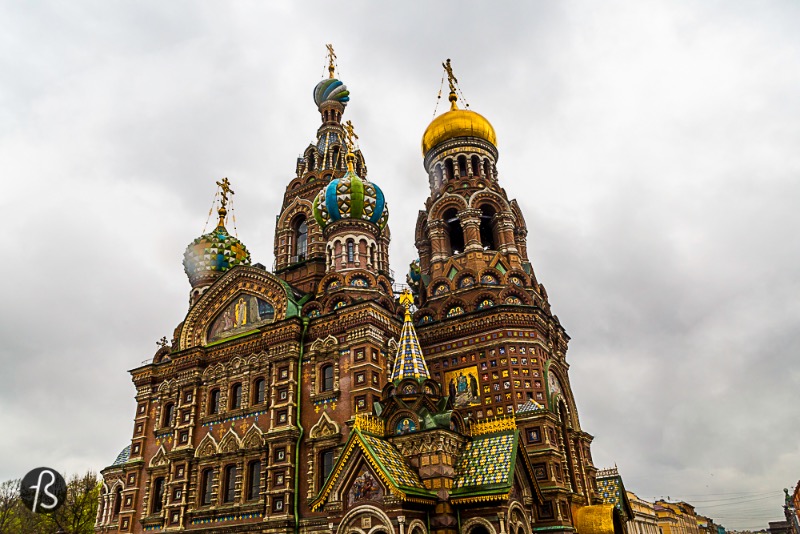
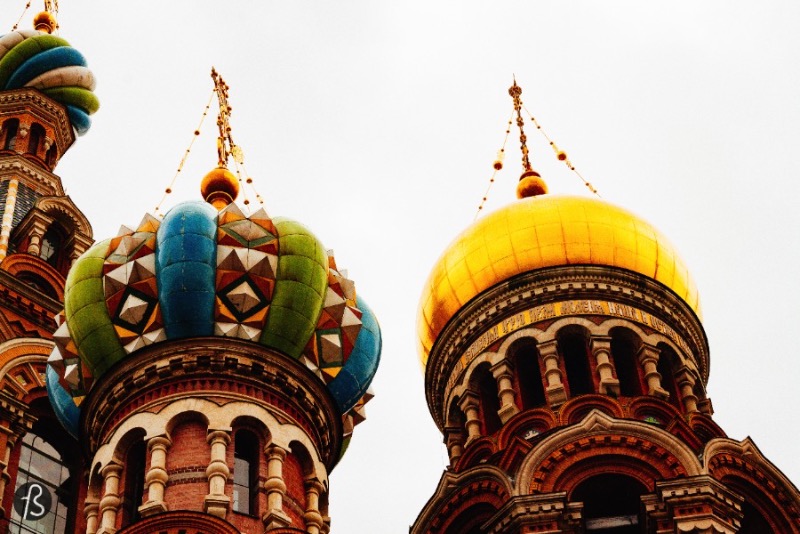
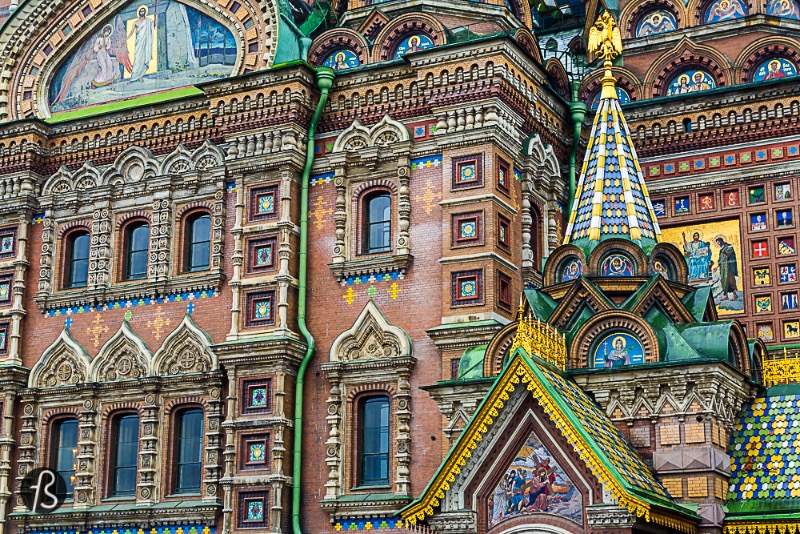
A little bit of history behind the Church of the Savior on Spilled Blood
This amazing church was built on the spot where Tzar Alexander II was assassinated in March 1881. After he assumed power in 1855, Alexander II initiated several political, judicial, and urban reforms. All of this happened in the wake of Russia’s defeat in the Crimean War against the British Empire, France, and Ottoman Empire. He knew something needed to change and he set this in motion.
In 1861 he freed Russian serfs from their ties to their masters and started setting some military reforms in motion.
He knew about the dangers he was putting himself into after surviving a series of attempts on his life, including an explosion in the Winter Palace and the derailment of a train. Everything came to an end in 1881 when he didn’t survive a bomb attack on his royal carriage by the anarchist group People’s Will.
Immediately after his death, his heir, Alexander III, declared his intention to erect a church on the site where his father died. In his father’s memory, he would build a traditional Russian church since he felt like St. Petersburg was being contaminated by Western influence.
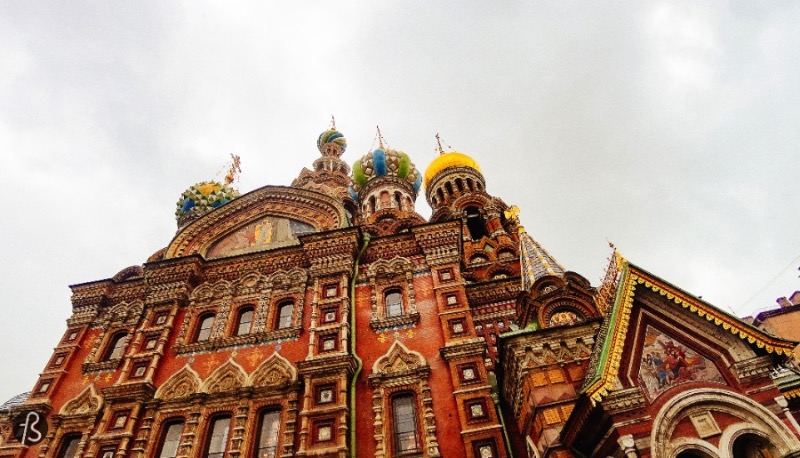
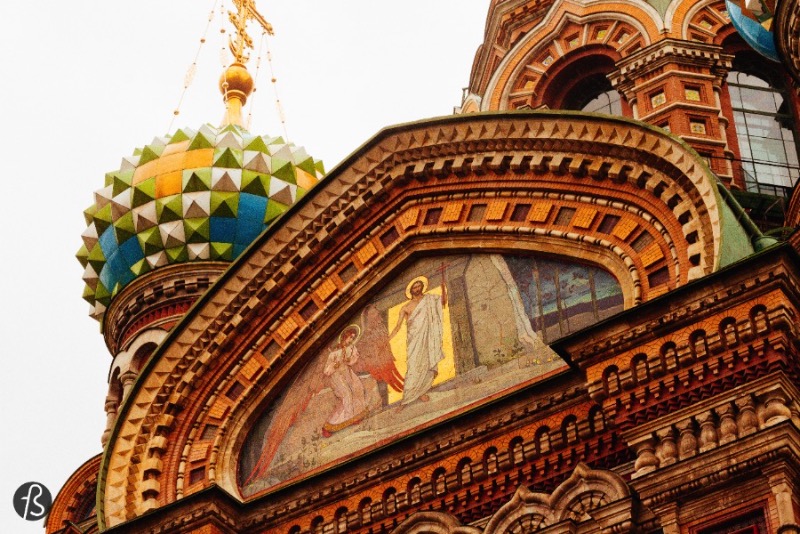
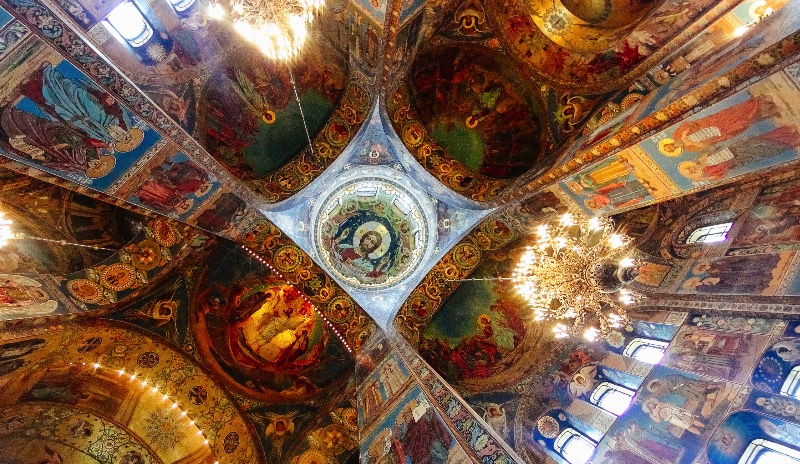
Several designs were rejected until Archimandrite Ignaty gave the job to Alfred Parland. When you visit the church you can see it drew heavy inspiration from the St. Basil’s Cathedral in Moscow and the Vladimir Cathedral in Kiev. Construction began in 1883 and was completed during the reign of Nicholas II in 1907.
Nobody knows for sure how much was spent to build the church, but estimates say around 4.5 million rubles, most of it was provided by the Imperial Family with the support of many private donors.
After the attack that took Tzar Alexander II life, a temporary shrine was erected on the site while plans for a permanent memorial were undertaken. Since the Church of the Savior on Spilled Blood is prominently situated along the Griboyedov Canal, the canal had to be narrowed down since the church needed to be on the exact spot where the assassination took place.
Inside the church, you can see an elaborate shrine showing the exact place of Alexander’s death. Embellished with topaz, lazurite, and other semi-precious stones, it contrasts heavily with the simple cobblestones of the old road exposed on the shrine’s floor.
No baptisms, funeral services, weddings, or other traditional church services were held in the Church of the Savior on Spilled Blood. Alexander III didn’t plan for this to happen. He built this church as a memorial to his father. This is why the only services held there were weekly requiems and sermon readings that attracted many people.
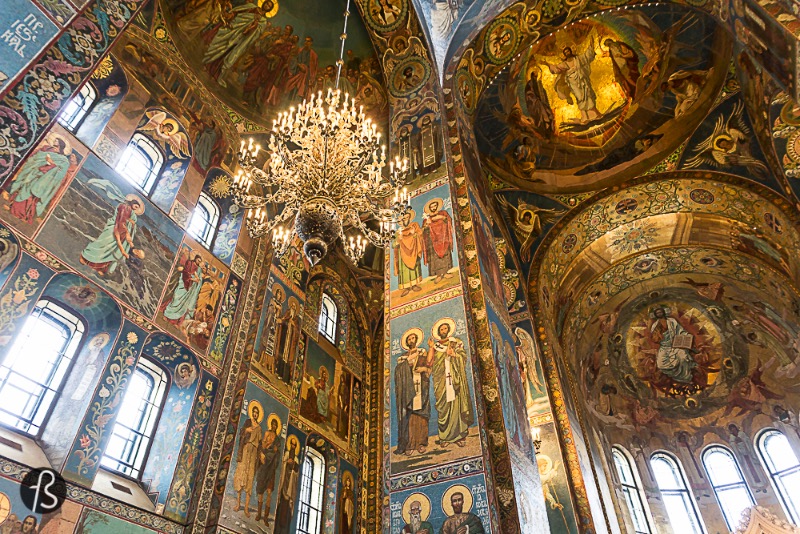
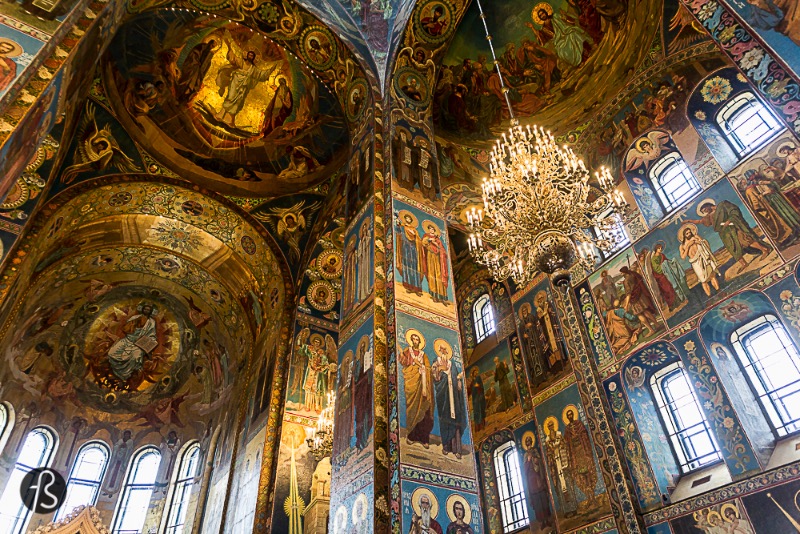
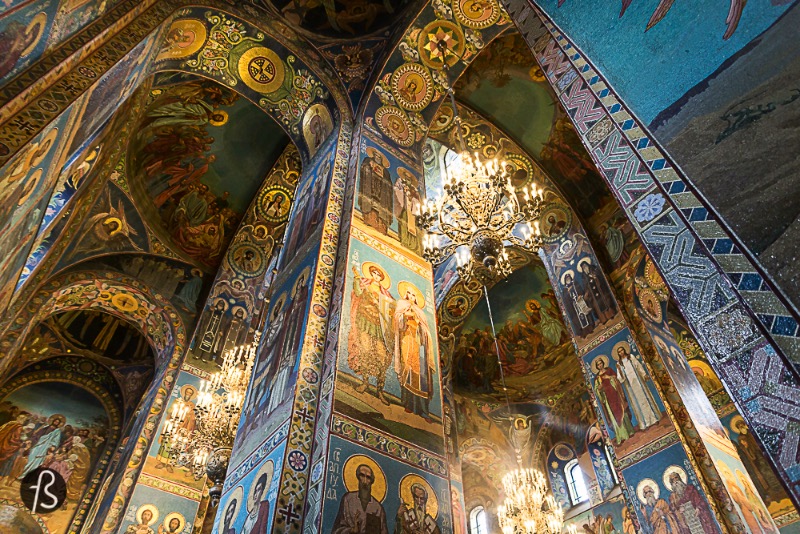
The Architecture of the Church of the Savior on Spilled Blood
The Church of the Savior on Spilled Blood differs greatly from the other structures around Saint Petersburg. Most of the city was built in Baroque or Neoclassical style, but this church looks like medieval Russia. When you walk around the old part of the city, your eyes will certainly be drawn to this beautiful building.
Inside the Church of the Savior on Spilled Blood, you will see more than 7000 square meters of mosaics that make this church even more special. It was, without a doubt, one of the most beautiful churches we have ever been to. The interior was designed by some of the most celebrated Russian artists of the time, like Viktor Vasnetsov, Mikhail Nesterov and Mikhail Vrubel. Maybe because of all this art, construction costs ran well over budget but we don’t care, this is beautiful.
Everything inside the church is covered in intricately detailed mosaics, from the walls to the ceiling. You must visit This place when you get to St. Petersburg.
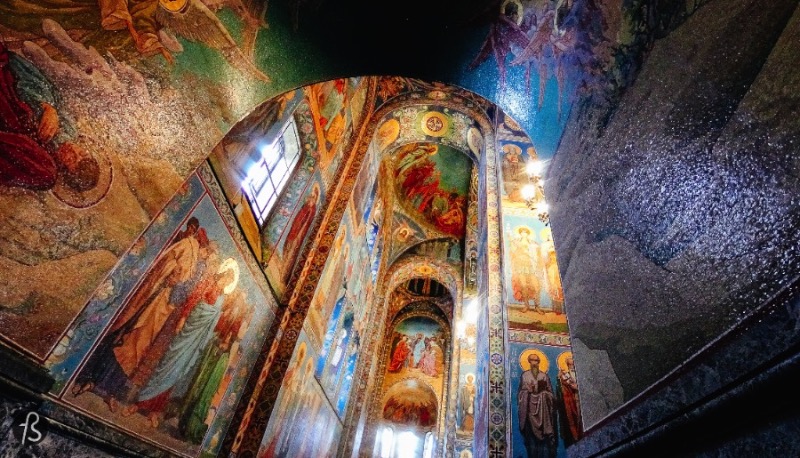
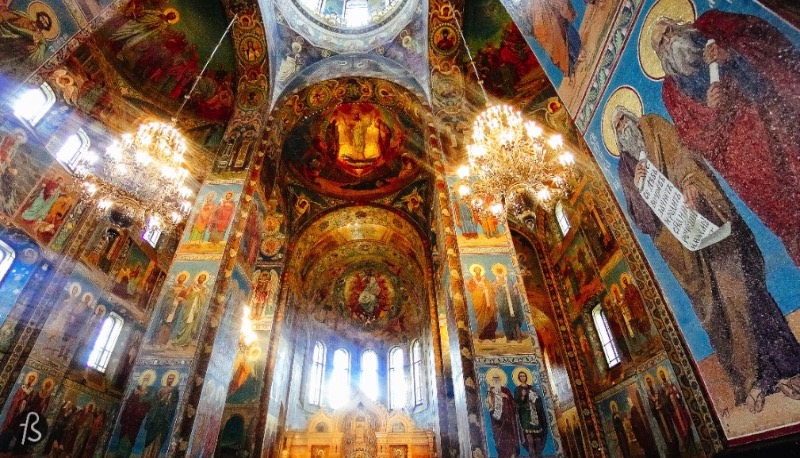
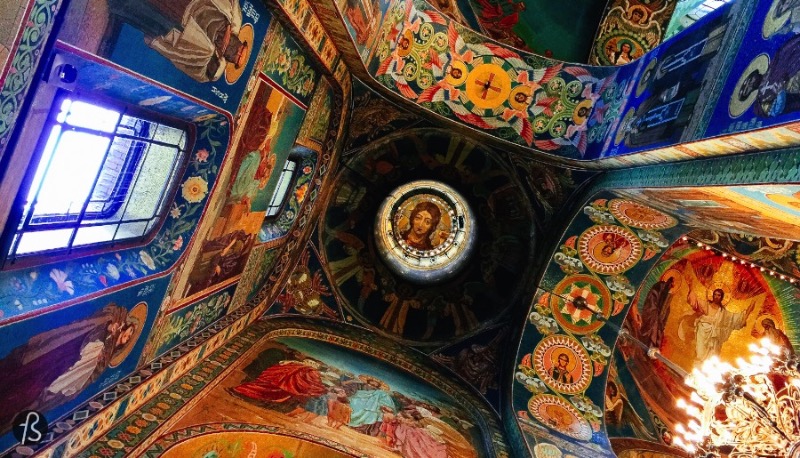
What happened to the Church after the Russian Revolution of 1917?
In the aftermath of the Russian Revolution, the Church of the Savior on Spilled Blood was ransacked, with its interior being left badly damaged. Despite becoming an official cathedral in 1923, the church was still looted. The Soviet government even closed down the church in 1932.
After that, the church was basically a garbage dump. Things were looking grim for the church, and some rumors even said it would be torn down. But things were about to get even worse later.
During the Second World War and the Siege of Leningrad, the church was used as a temporary morgue for those who died in combat and from starvation. Like most of St. Petersburg, the church suffered significant damage, and even after the long restoration, you can still see some scars of the war on the walls inside the church.
After the war, the church was first used as a warehouse for the Small Opera Theatre, and later, it was used as a warehouse for vegetables. This is why some people used to call this church Saviour on Potatoes. The shrine was almost completely destroyed during those days.

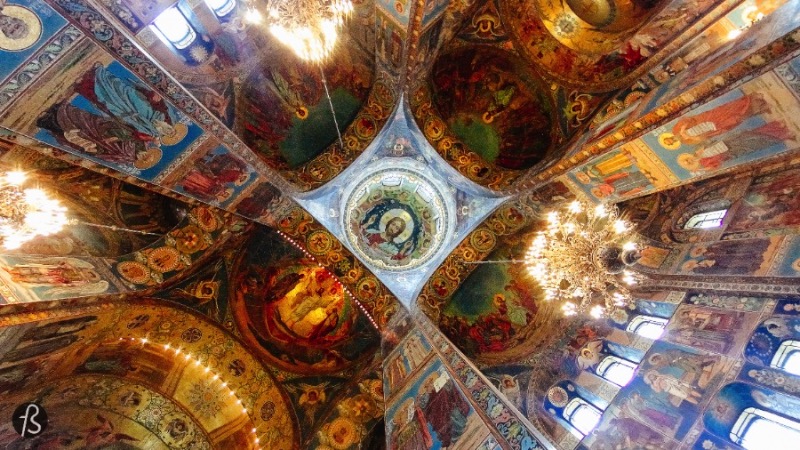
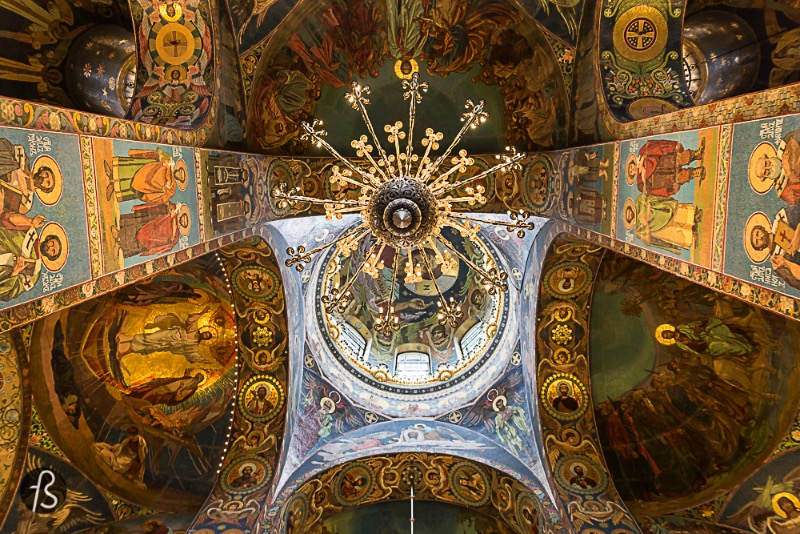
Restoring the Church of the Savior on Spilled Blood
On July 20, 1970, the church was made a branch of the St. Isaac’s Cathedral museum, and its fate started to change. It took 27 years of restoration to fight back against decades of damage and deterioration. It finally reopened to the public in August 1997 when thousands of eager visitors swamped the church.
From outside, you start taking pictures of this church like crazy. At least, this is what we did. It was our first time seeing such a building, and we loved it. When you go inside, you understand why so many people visit this church yearly.
The Church of the Savior on Spilled Blood has an outstanding and varied collection of mosaic icons. Several religious icons were completed in academic painting, modernist style, and Byzantine icon painting traditions. It is breathtaking.
Church of the Savior on Spilled Blood can be visited daily (except Wednesday) from 10:30 to 18:00, with evening opening during the summer months. Admission cost 250 RUB for adults and 50 RUB for children when we visited the church in 2015. You can take pictures of everything inside; the church is wheelchair accessible.
Church of the Savior on Spilled Blood
2, Naberezhnaya Kanala Griboedova
St Petersburg – Russia
If you decide to go to Russia, you should go with Timetravels! They are an amazing travel agency and can help you with everything you might need for a perfect Russian trip. They organize various tours, from student tours to low-budget tours to grown-up travels!